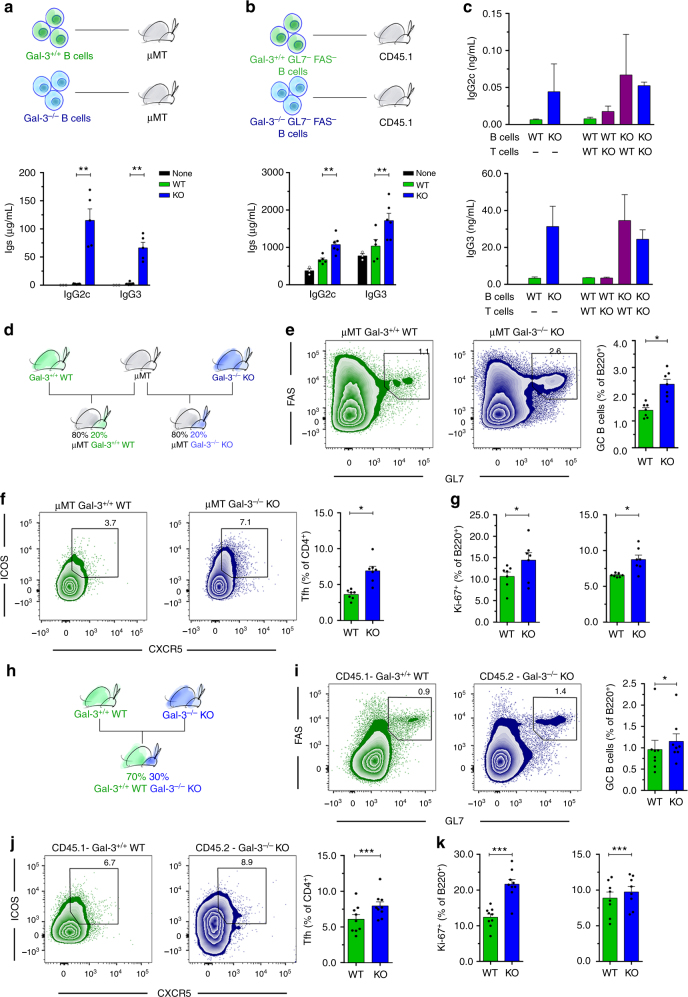Fig. 3.
B cell-intrinsic Gal-3 deficiency favors ASC differentiation in vivo and in vitro and triggers spontaneous GC formation. a Schematic of the adoptive transfer experiment showing that B cells from Gal-3+/+ WT and Gal-3 KO mice were injected iv into μMT mice. Bar graph showing the seric IgG2c and IgG3 concentration of recipient μMT mice at 2 weeks after cell transfer (μMT+Gal-3+/+ B cells n = 5; μMT+Gal-3−/− B cells n = 5). b Schematic of the adoptive transfer experiment showing that non-GC B cells from Gal-3+/+ WT and Gal-3 KO mice were injected iv into CD45.1 WT mice. Bar graph showing the seric IgG2c and IgG3 concentrations of recipient WT mice at 2 weeks after cell transfer (CD45.1+Gal-3+/+ B cells n = 5; CD45.1+Gal-3−/− B cells n = 6). c IgG2c and IgG3 concentrations in the supernatants of B cells co-cultured with T cells (ratio 1:1) from the spleen of WT or Gal-3 KO mice and stimulated for 6 days with anti-CD3 and anti-IgM. The combinations of B and T cells are indicated (n = 4 for each condition). d Schematic of mixed BM chimeric mice containing a 80:20 ratio of μMT:Gal-3+/+ WT or μMT:Gal-3 KO BM cells. e, f Representative plots and statistical analysis of the frequency of splenic GC B cells (e) and Tfh cells (f) from mixed BM chimeric mice shown in Fig. 3d (n = 7 for each group). g Frequency of splenic Ki-67+ B220+ B cells (left) and Ki-67+ CD4+ T cells (right) from mixed BM chimeric mice shown in Fig. 3d (n = 7 for each group). h Schematic of mixed BM chimeric mice containing a 70:30 ratio of CD45.1 Gal-3+/+ WT:CD45.2 Gal-3 KO BM cells. i, j Representative plots and statistical analysis of the frequency of splenic GC B cells (i) and Tfh cells (j) from mixed BM chimeric mice shown in Fig. 3h (n = 9). k Frequency of splenic Ki-67+ B220+ B cells (left) and CD4+ T cells (right) from mixed BM chimeric mice shown in Fig. 3h (n = 9). Data are the mean ± s.e.m. *p < 0.05, **p < 0.005, ***p < 0.001 (unpaired (a–h) and paired (i–k) Student’s t-test). Data are representative of three (a–c) or two (d–k) independent experiments

